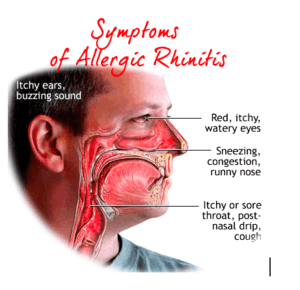ARMD/ AMD
Ever wondered how it could be like to see every large object in a room except the facial features of the person you are looking at? No matter how unreal it may seem, this is something many elderly people go through every day. The reason behind this bizarre experience is an eye disease known as Age-Related Macular Degeneration (AMD).
As the name suggests, this disease occurs in the elderly, most commonly over 60 years of age, and the part of the eye affected is called the macula. Although AMD rarely causes complete blindness, it remains a leading cause of permanent vision loss among the elderly population.
What is AMD and Why does it Happen?
The macula is a 5 mm wide area on the retina at the back of the eye. This tiny nerve-rich area has a huge job. It is responsible for our central vision, most of our color vision, and all of the fine details that we see. Ergo, any condition that damages the macula results in blurring of central vision and makes it harder to see words, facial details, or to drive or do precision tasks.
In Age-Related Macular Degeneration, there is progressive damage to the macula in one or both eyes. Some people experience this gradually over a prolonged period of time. Whereas in others, AMD progresses faster. In any case, the disease gets worse over time.
Animated explainer video created by Costamedic team. Click here to check our services.
Epidemiology of Age-related macular degeneration
- Prevalence: AMD is more widespread than we think. According to a meta-analysis report, the global prevalence of AMD is 8.7%. Worldwide, the number of people with macular degeneration is projected to be about 288 million by 2040. The Bright Focus Foundation states that, in the US alone, an estimated 11 million people suffer from some form of AMD. This is expected to double by the year 2050.
- Age: According to the American Macular Degeneration Foundation, it is most likely to occur in people aged 55 or above. Mayo Clinic states that the disease is most prevalent among people over 60 years of age.
- Gender: Women have a greater life expectancy than men. Since women live longer, they are more likely to get AMD. In 2010, women constituted 65% of the total population with AMD in the US.
Types of AMD
There are two basic forms of macular degeneration:
- Dry or Atrophic form
- Wet or Exudative form
The pathogenesis of these two types of AMD vary, so does the treatment approach.
Dry Macular Degeneration
- This is the more prevalent form of the disease and accounts for 80-90% of the people suffering from AMD.
- In this type of AMD, yellow deposits called drusen appear in the macula. There are only a few such spots in the initial stage of the disease. This does not hamper the vision. Ergo, the initial phase of AMD is often asymptomatic.
- With time, more drusens appear. They coalesce and get bigger. This is when the person affected starts experiencing dimness or distortion of vision, especially during reading.
- Drusens take over and the light-sensitive cells in the macula get thinner and eventually die, leading to central vision loss.
Wet Macular Degeneration
- In the exudative or wet form of AMD, blood vessels grow from underneath the macula. Ergo, this is also known as neovascular macular degeneration.
- These blood vessels are abnormal and are not supposed to be there at all. So blood leaks causing accumulation of fluid into the retina.
- The vision gets distorted, and straight lines look wavy. Bleeding forms scar on the macula, causing permanent loss of central vision.
- This is the less common, yet rapidly progressive form of the disease, accounting for 10-15% of the total cases.
Dry v/s Wet AMD: Which is Worse?
Which form of AMD is worse is a matter of perception. However, there are some distinct differences between these two types of macular degeneration:
Speed of Progression: Dry AMD progresses slowly and early diagnosis and treatment can further slow down its course. Wet macular degeneration is more aggressive. The growth of abnormal blood vessels causes rapid deterioration of sight.
Treatment Approaches: There are different approaches to treating dry and wet macular degeneration as the pathogenesis differs. In dry or Atrophic AMD, the trick lies in lifestyle modification and adjusting vitamins and minerals in a prescribed proportion. This slows down the disease process and helps preserve as much of the vision as possible. The intermediate and advanced stages of wet or exudative AMD are not responsive to dietary supplements. A more surgical approach is taken to get rid of the abnormal blood vessels.
Who are More at Risk of Developing AMD?
Researchers have identified several risk factors for Age-Related Macular Degeneration.
- Age more than 55 years
- Caucasian Race
- Smoking
- Having a Family History of AMD
- Other Possible Risk Factors e.g. coronary artery disease, and obesity.
Age-related macular degeneration symptoms
AMD has 3 stages:
- Early Stage: The patient is asymptomatic.
- Intermediate Stage: Some vision loss occurs, but may still remain unnoticed by the patient.
- Late Stage: At this point, noticeable vision loss occurs.
- The first sign is either a sudden or a gradual change in the quality of vision.
- Straight lines may appear wavy, curved, or distorted.
- The patient may ask for brighter light when reading or doing precision tasks.
- There may be increased blurriness of printed words.
- Difficulty in recognizing faces.
- A dark blurry area or whiteout or blank spot appears in the center of the visual field. Over time this blank spot gets bigger causing central vision loss.
- Change of color perception may also occur, but this is rare.
Reaching the Diagnosis
The Amsler Grid Test
This is a handy tool to look for any line distortion or a missing visual field area. This consists of a grid with black lines and white boxes.
To self examine,
- Tape the grid to a wall 12 to 15 inches away from you.
- Make sure you tape it at your eye level and your environment is well lit.
- Now put your reading glasses on and cover one eye with your palm.
- With your open eye focus on the black dot at the center of the grid.
- While maintaining a fixed gaze on this dot, look. Are any of the surrounding lines missing or distorted?
Positive Amsler Grid Test
The Amsler Grid test is positive if the grid lines look blurry, dark, wavy, or simply blank. If you have experienced this, don’t panic or jump to conclusions. This means it is time to see your ophthalmologist so that he can investigate what is going on.
Dilated Eye Exam
This will be performed by your doctor. He/she will apply some eye drops to dilate your pupils and look inside your eye to check for AMD. This is a painless examination. However, the drops used to dilate your pupils may leave your vision blurry or sensitive to light for a while. So have a friend drive you home.
Optical Coherence Tomogram (OCT)
You may be recommended for an Optical Coherence Tomogram. OCT uses low-coherence light to capture micrometer resolution 2D or 3D images of the tissues inside your eyes. In simple words, the doctor takes pictures of the inside of your eye using a special machine. This helps determine the thickness of the layers of your retina.
Fluorescein Angiography
This test visualizes the blood flow in the choroid and retina using a special dye called fluorescein. If there is a growth of abnormal blood cells due to wet macular degeneration, it will be visible here.
Treatment of Age-Related Macular Degeneration
Low vision aids are given to people who are severely affected with AMD to make the most out of their remaining vision. These are devices with special lenses and electronic systems that amplify and create larger images of the things nearby.
AMD is treatable but not curable at present. The approach to treating Age-Related Macular Degeneration depends both on the type and the stage of the disease. In the early stages, the patient is asked to come for regular eye checkups so that the doctor can keep track of the pace of disease progression. Lifestyle modifications including eating healthy, and quitting smoking play a vital role in slowing down the macular degeneration process.
In dry macular degeneration, special dietary supplements called AREDS and AREDS2 are prescribed. These are special formulas. We do not ordinarily get these nutrients in such high doses in our regular diet.
AREDS consists of:
- Vitamin C 500 mg
- Vitamin E 400 IU
- Beta Carotene 15 mg
- Copper 2 mg
- Zinc 80 mg
AREDS2 is a formulation with:
- Vitamin C 500 mg
- Vitamin E 400 IU
- Copper 2 mg
- Lutein 10 mg
- Zeaxanthin 2 mg
- Zinc 80 mg
In wet macular degeneration, medicines called anti-VEGF drugs are injected into the affected eye. Their job is to stop abnormal blood vessels from growing and leaking under the retina. Another option to treat the neovascular or wet form of the disease is Photodynamic Laser Therapy to literally break down the unwanted blood vessels.
The Future of AMD Treatment
New ways to combat Age-Related Macular Degeneration are in development as we speak. Experts are thinking about submacular surgery to remove abnormal blood vessels from the retina. There are also ideas like retinal translocation, where surgeons will simply shift the macula from the damaged area with blood vessels to a healthier spot in the retina. With these innovative ideas making their way to us, the future of AMD treatment seems more promising.
Prognosis of Age-Related Macular Degeneration
- People with AMD rarely end up with complete blindness.
- It is usually the central vision that is hampered, but patients can still carry out daily chores.
- Atrophic or dry degeneration progresses slowly whereas the neovascular or exudative wet form gets worse really fast.
- When both eyes are affected with significant loss of central vision, quality of life is hampered.
The Puzzle of Macular Degeneration in Teenagers
Macular degeneration may seem like a problem only the elderly people have to deal with. That’s not always the case.
One in 20,000 patients with macular degeneration is a child or a teenager. This condition is called Stargardt’s disease, named after the German ophthalmologist who reported the first case of early-onset macular degeneration back in the 1900s.
So, can a young person have macular degeneration?
Yes, but the odds of it happening is low. Only if both the parents end up having something called an ABCA4 gene mutation, there is a 1/4th chance that the child will have Stargardt’s disease.
EndNote
In any case, regular eye checkups, especially after the age of 55 are the key to identifying if anything is up with your macula. Early diagnosis and intervention works wonders in slowing down, if not putting a stopper to Age-Related Macular Degeneration.
Please let us know in the comment section if you have liked the article. Please check our services.



